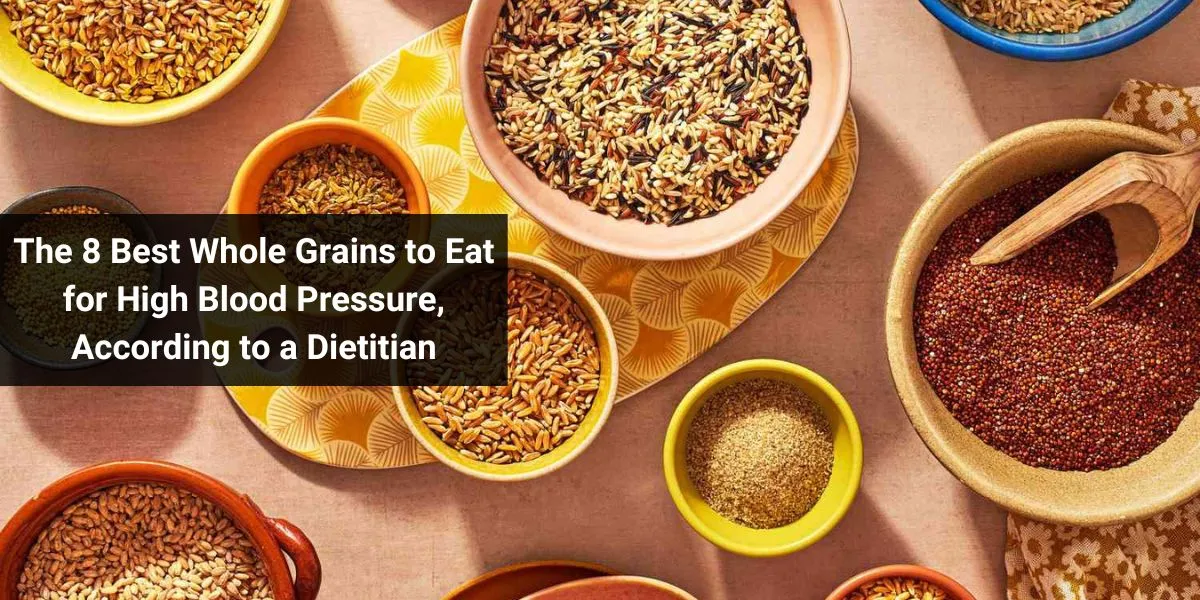Hey there, health-conscious folks! High blood pressure, or hypertension, is a common health concern that affects many of us. While medication and lifestyle changes play a crucial role in managing it, your diet also plays a significant part. Whole grains are a secret weapon when it comes to keeping your blood pressure in check. In this article, we’re going to explore the top 8 whole grains recommended by a dietitian for maintaining healthy blood pressure levels. Let’s dive into the world of grains that can help you on your journey to better cardiovascular health.
Understanding the Connection Between Whole Grains and Blood Pressure
Before we unveil our list of whole grains, let’s take a moment to understand why they are essential for managing high blood pressure:
1. Rich in Fiber: Whole grains are loaded with dietary fiber, which helps lower blood pressure by improving blood vessel function and reducing inflammation.
2. Low in Sodium: Unlike many processed grains, whole grains are naturally low in sodium, a mineral known to raise blood pressure.
3. Heart-Healthy Nutrients: Whole grains contain essential nutrients like potassium, magnesium, and antioxidants, all of which contribute to better cardiovascular health.
4. Satiety: The fiber and complex carbohydrates in whole grains keep you feeling full and satisfied, which can prevent overeating and support weight management—an essential aspect of blood pressure control.
5. Stable Blood Sugar: Whole grains release energy slowly, preventing spikes and crashes in blood sugar levels, which can impact blood pressure.
The Top 8 Whole Grains for Healthy Blood Pressure
Now, let’s explore the best whole grains to include in your diet for maintaining healthy blood pressure:
1. Oats

The Breakfast Champion
Oats are a breakfast staple and a fantastic source of soluble fiber, which helps reduce blood pressure levels. They’re versatile and can be enjoyed in various forms like oatmeal, overnight oats, or added to smoothies.
2. Quinoa

The Protein-Packed Grain
Quinoa is a complete protein source and an excellent choice for those looking to add more plant-based protein to their diet. It’s also rich in fiber and essential minerals.
3. Brown Rice

The Healthier Rice Option
Brown rice is a whole grain alternative to white rice, packed with fiber, magnesium, and other heart-healthy nutrients. It makes a perfect side dish or base for grain bowls.
4. Whole Wheat

The Bread and Pasta Basics
Choosing whole wheat bread and pasta over their refined counterparts can significantly impact your blood pressure. Look for “100% whole wheat” on labels for the most benefit.
5. Barley

The Unsung Hero
Barley is a lesser-known whole grain that deserves more attention. It’s high in fiber, vitamins, and minerals, making it a heart-healthy choice for soups, stews, or salads.
6. Buckwheat

The Gluten-Free Wonder
Buckwheat is naturally gluten-free and offers a unique flavor. It’s rich in fiber and magnesium, making it an excellent choice for pancakes, porridge, or as a side dish.
7. Farro

The Ancient Grain Revival
Farro, an ancient grain, has gained popularity for its nutty flavor and excellent nutritional profile. It’s high in fiber, protein, and antioxidants, making it a great addition to salads and grain bowls.
8. Millet

The Tiny Grain with a Big Punch
Millet is a gluten-free grain that’s rich in magnesium, a mineral associated with lower blood pressure. It can be used in both sweet and savory dishes.
Conclusion
Whole grains are a valuable addition to your diet if you’re looking to maintain healthy blood pressure levels. Incorporating these grains into your meals can provide you with the fiber, essential nutrients, and satiety needed for better cardiovascular health. Remember that a balanced diet, regular physical activity, and lifestyle modifications play a vital role in managing high blood pressure.
FAQ:
1. Can I still enjoy whole grains if I’m following a low-carb diet?
While whole grains are relatively higher in carbohydrates, some can still be included in moderation on a low-carb diet. Consult with a healthcare professional or dietitian to determine the best options for your specific needs.
2. How much whole grain should I consume daily for better blood pressure management?
The American Heart Association recommends at least three servings of whole grains per day as part of a balanced diet. This can include foods like whole grain bread, pasta, and rice.
3. Are whole grain products more expensive than refined grain products?
Whole grain products can sometimes be slightly more expensive, but the long-term health benefits outweigh the cost difference. Look for sales, bulk options, and discounts to make them more affordable.
4. Can I find whole grain alternatives for my favorite processed snacks?
Yes, you can often find whole grain versions of popular snacks like crackers and cereal. Check food labels for “whole grain” or “whole wheat” to make healthier choices.
5. Are there any potential side effects or allergies associated with whole grains?
Some individuals may have allergies or intolerances to specific grains, so it’s essential to pay attention to your body’s response. If you suspect an issue, consult with a healthcare professional for guidance.



